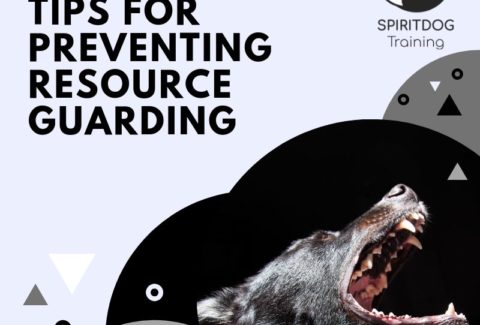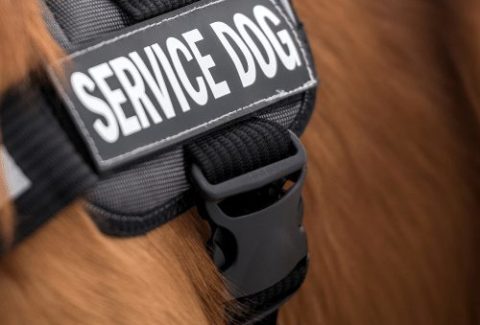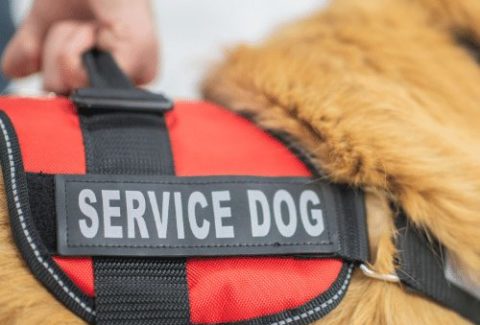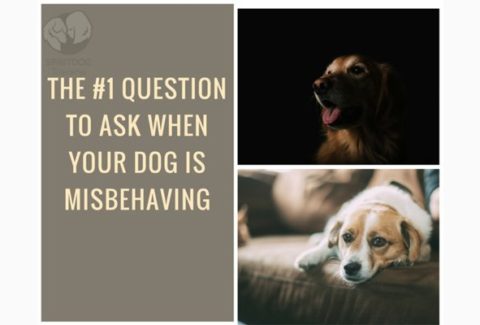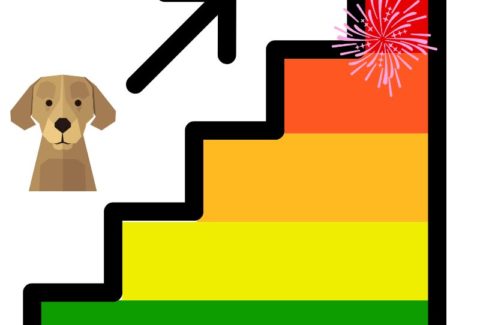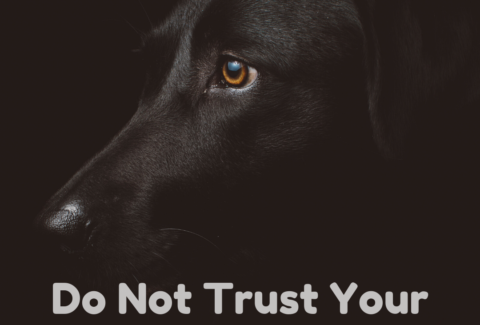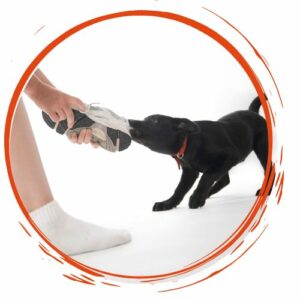Moving Your Dog With Body Pressure – Please Don’t
May 9, 2021 2021-05-24 13:49Moving Your Dog With Body Pressure – Please Don’t
Moving Your Dog With Body Pressure – Please Don’t

This week I made a video tutorial for teaching your dog how to back up. Here you can see it:
Trick that is very tempting to teach by using body pressure is Backing up: simply walk into your dog until he moves. This has always been a practice I do not enjoy watching, and here is why:
1. It is rude
Walking into someone’s personal space so insistently that they have to move in order to reestablish their boundaries is plain rude. If you walk into a dog slowly, you will be able to see them displaying calming signals – lip licking, blinking, turning their head to the side etc. – in an effort to stop you from invading their personal space before they actually back up. This is the dog saying “Please, it’s making me very uncomfortable, stop.”
Imagine having someone – even a good friend – walk closer and closer to you until you step back because it gets too uncomfortable. That would not be a pleasant experience, would it?
I do not want my dog to believe that I am unaware of his personal space, and that I am unpredictable in when I may or may not walk into it. Respect goes both ways – if you want your dog to be aware and respectful of your boundaries, you need to be respectful of his.
2. It does not actually teach them to back up
If I would walk into my dog’s personal space until he finally takes a step or two, this would not actually teach him to back up on his own, right?
Making the behavior happen through body pressure does not mean your dog understands and can replicate.
What did my dog do? He reacted to an action of mine. He did not initiate or come up with the behavior himself – it is only a response to what I did. It is highly unlikely that my dog will take his reaction to me moving into him and spontaneously offer backing up on his own accord.
He is dependent on me initiating – his behavior is not an action, only a reaction.
He will also only learn to back up a few steps – the steps necessary to get me out of his personal space. We do not get a long distance back-up this way.
3. It makes it harder to utilize “Personal Distance”
Every dog has a specific “personal distance” that he likes to keep to his handler at all times. Try to watch out for out – this distance will pull him in/push him out, and it can make or break a behavior.
I have often seen beginner clicker trainers play 101 Things To Do With A Box and their dog would seem set on not stepping into the box (not just oblivious to the task – but apparently making an effort to not perform it). While clearly aware that he is supposed to interact with it, he would dance around, walk away and come back, or bark in frustration. The dog’s perception of personal distance prevented him from interacting freely with the box. Moving the handler further away from the box immediately lowers that pressure and allows the dog to step into it.
Try it the next time when shaping a behavior with an object – vary your distance and see how it effects your dog’s likelihood to interact.
(This also means that if you are too far away from the object, your dog will choose to be closer to you so that he may actually turn his back to the object)
If we are aware of this concept, we can use it to our advantage – a lot. If we violate it by not only ignoring the dog’s personal distance, but consciously pushing into it to make behavior happen, we lose a very powerful tool that otherwise can be utilized in many training settings.
Watch dogs interacting with each other. You will see that the ones that are good in social settings are acutely aware and very respectful of each other’s personal space – whereas the “dog park machos” waltz into the boundaries of their companions and do not make themselves popular with it.
Let’s not be that rude friend to our dog!


